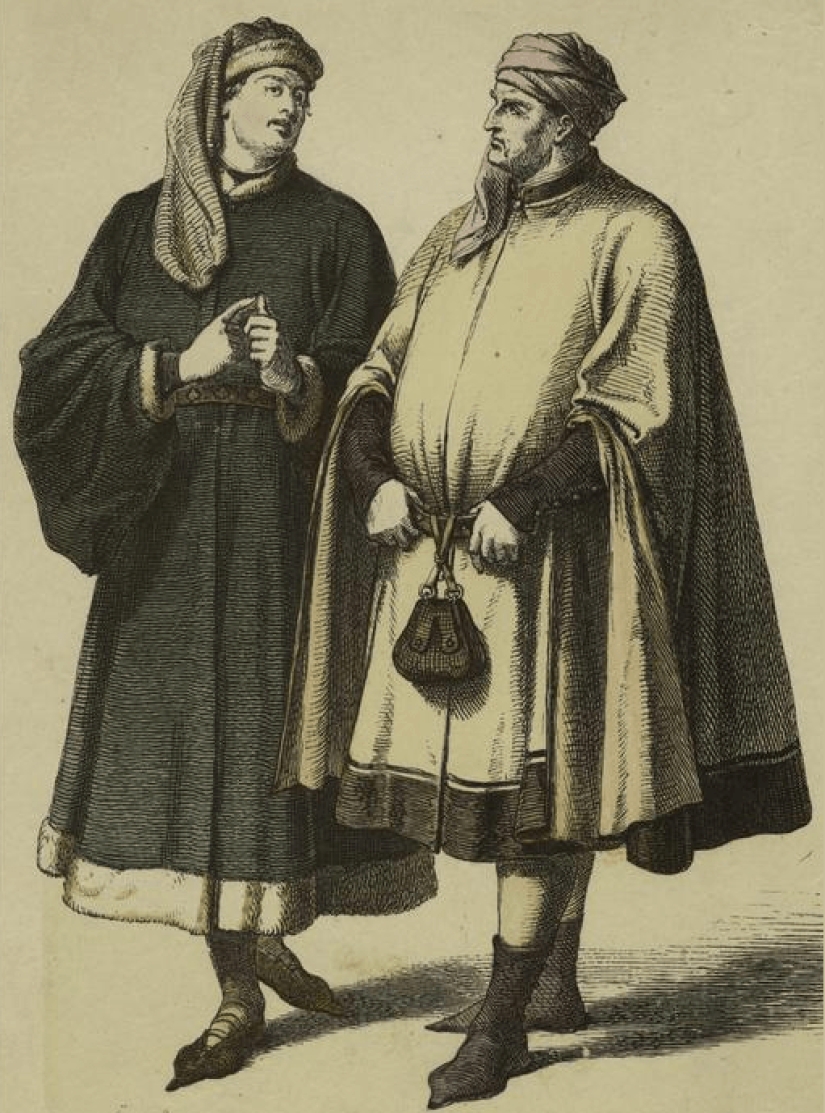Thongs, stockings and 5 more women's things that were once men's
Categories: Fashion
By Pictolic https://pictolic.com/article/thongs-stockings-and-5-more-womens-things-that-were-once-mens.htmlMany things that are considered exclusively female today were once borrowed from men. It just so happened that for many centuries it was for the strong half of humanity that practical and beautiful novelties were created. These items came to women much later, borrowed for practical and aesthetic reasons, or imposed by marketers to increase sales.


Those very small panties, today strongly associated with women's erotic underwear, were created by men and for men. It happened a very long time ago, and when exactly and where we are unlikely to know. Something like two drops of water similar to modern thongs guys in the territory of modern Greece, Turkey, Egypt and the Middle East wore even before our era.
In the Middle Ages, thongs were not worn, and they were remembered in the 19th century. English aristocrats used them as sportswear for gymnastics and other sports. Women first wore thongs only in 1939. During the New York World Trade Fair, they were used by cabaret dancers to cover up nudity, as pointed out by Fiorello Laguardi, the mayor of New York.

Modern women's bags came from purses-bags made of leather and fabric, which were worn on the belt by men. In them they put not only coins, but also a tobacco pouch, a pipe, a flint and other important trifles. Women, in order not to lose the little things, hung it to the belt on special cords-chatelains. So they fixed mirrors, sewing accessories, combs and other accessories on themselves.
In the 18th century, ladies had so many important small items that it became inconvenient to wear them all on the belt. Then the first reticules appeared-modified men's purses. They looked like a small cloth bag attached to the arm with a long cord and exquisitely decorated. This item turned into a modern handbag only in the first half of the 19th century.

For the first time, women's sanitary pads appeared on sale in 1921 in the United States. They were made of special cremated paper made of hygroscopic plant fibers. This material was created during the First World War for bandaging wounded soldiers. The nurses were the first to evaluate the absorbent properties of such paper – they noticed that it absorbs moisture and odors five times better than cotton.
In 1921, the price of cotton rose sharply and the Kimberly-Clark company recalled the military dressings. To use it for their own purposes, the brand modernized the material and gave it the name "kotex". It was under this brand, which still exists today, that the first gaskets were released.

Such a very feminine little thing as a bra clasp was also invented by a man and was intended specifically for men. Created the world-famous steel wire hooks ... American writer and classic of world literature Mark Twain.
The author of" Tom Sawyer " had a terrible dislike for suspenders, which in the mid-20th century were the only way to keep loose men's trousers in place. He patented the clasp on December 19, 1871, and it immediately became popular in the United States, and then in Europe. It was used not only for fixing the belt of trousers, but also for buttoning shirts and vests. In 1889, when the bra was invented, the hook-and-loop fastener proved to be the most effective accessory for it.

Heels, which today are strongly associated with women's shoes, were invented for men, and even for the military. The first high-heeled shoes appeared in the Persian horsemen – these shoes helped to securely fix the foot in the stirrup and attack the enemy at full gallop.
In Europe, high heels appeared in the 17th century – they became an attribute of the aristocrats, who added height and impressiveness. King Louis XIV, by a special decree of 1673, obliged all men who appeared at court to wear high-heeled shoes. Women wore heels not to appear taller, but to visually reduce the foot peeking out from under the edge of full skirts.

To all of us, stockings seem to be the real personification of femininity. Similarly, centuries ago, this piece of clothing was one of the symbols of undeniable masculinity. Since the 9th century, stockings were the prerogative of the stronger sex, and women began to wear them en masse only in the 18th century.
The first attempts at a purely masculine item of clothing ladies began to do in the 16th century, which fashion historians jokingly call the "dark age of tights". By the end of the 19th century, men completely abandoned stockings, and this thing became undivided in the world of women's fashion.

These days, pink things are bought for female babies, and blue things are bought for male babies. But just a century ago, the exact opposite was true. The first differences in colors and styles of clothing appeared in the children's wardrobe in the first years of the 20th century, and before that, boys and girls were equally dressed in white dresses until adolescence.
By the beginning of the First World War, pink color became an unspoken sign of boys ' clothing, and blue – girls. Everything changed in the 1960s and the feminist movement is to blame for the change in color preferences. Activists fighting for women's rights began to dress up girls in pink specifically to "break the system" and rid society of patterns. Now we know that they were worried for nothing and their struggle only changed the colors.
Keywords: Fashion | Style | Underwear | Man | Woman | Wardrobe | Heels | Women's clothing
Post News ArticleRecent articles

On your day off, you can take a break from everyday work, do what you love, or just have a good time with family and friends. Why ...

These are the films where we close our eyes in the most terrible scenes, and our palms are covered with cold sweat. They have a ...
Related articles

Many ladies are dreaming to look younger, but instead make mistakes, which only exacerbate their problems. Here are the top ...

It is difficult for a modern person, especially a young one, to imagine a world without mobile communications, the Internet, ...

They became symbols of beauty, femininity and seduction, but before the world recognition, each of these supermodels was an ...

Now there are so many beauty bloggers with self-care guides that you can understand why girls refuse beauty salons and try to ...